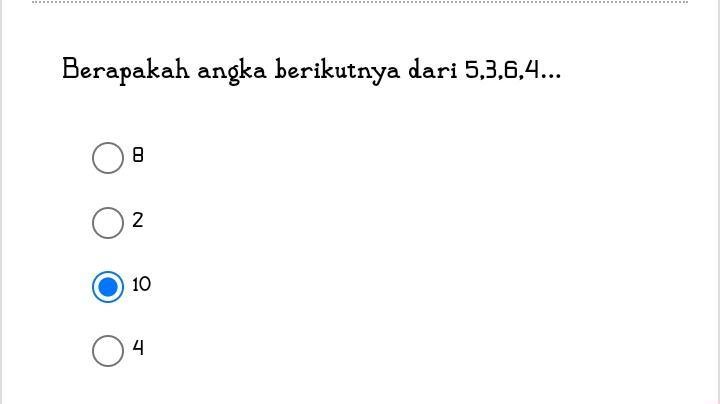
What comes after 5? The straightforward answer is 6. Yet, this simple question, “berapakah angka berikutnya dari 5,” opens up a fascinating world of numbers and patterns.
Understanding sequences and how numbers relate to each other paves the way for deeper mathematical thinking. Whether you’re a student grappling with math homework or simply curious about numerical progressions, even the simplest queries can lead to engaging insights.
Join me as we explore the significance of number sequences and the joy of answering seemingly simple questions that reveal much more beneath the surface.
berapakah angka berikutnya dari 5
When we talk about numbers, we often come across a simple yet intriguing question: “What is the next number after 5?” This question, while seemingly straightforward, opens the door to a deeper understanding of mathematics, sequences, and how numbers relate to each other. In this section, we will explore various aspects of this topic, including basic counting, the concept of sequences, and some fun mathematical patterns that involve the number 5.
Understanding Basic Counting
Counting is one of the first things we learn in mathematics. We start with simple numbers and gradually progress to more complex concepts. When we think about counting, it is a linear process.
To illustrate this, let’s look at the sequence of numbers starting from 1 up to 10:
- 1
- 2
- 3
- 4
- 5
- 6
- 7
- 8
- 9
- 10
You can see that if you start from 1, the next number after 5 is simply 6. This is because numbers increase linearly when we count in whole numbers, and we increment each time by one.
Sequential Numbers and Patterns
Now that we understand basic counting, let’s dive into the concept of sequential numbers and patterns. A sequence is simply a list of numbers arranged in a specific order. In our case, the sequence of whole numbers is a classic example.
When we think about the number 5, we can also consider various sequences that include it. Here are some common types:
Arithmetic Sequences
An arithmetic sequence is a sequence of numbers in which the difference between consecutive terms is constant. For example:
- 2, 4, 6, 8, 10 (Here, the difference is 2)
- 5, 10, 15, 20, 25 (In this case, the difference is 5)
When we look at an arithmetic sequence with a starting point of 5, the next number depends on the common difference. If we decide our common difference is 1, then after 5, the next number is 6. If the common difference is 2, the next number would be 7, and so on.
Geometric Sequences
A geometric sequence, unlike an arithmetic sequence, involves multiplication rather than addition. Each term is found by multiplying the previous term by a fixed, non-zero number. Here’s a straightforward example:
- 2, 4, 8, 16 (Each number is multiplied by 2)
- 5, 10, 20, 40 (Each number is multiplied by 2)
In this case, if we start from 5 and multiply by 2, the next number is 10. Understanding these relationships helps us appreciate how numbers are interconnected.
Exploring Number Patterns
Numbers are not just about counting; they have patterns that can be fascinating to explore. Here are some notable number patterns involving 5:
Odd and Even Numbers
The number 5 is an odd number. Understanding odd and even numbers can help us predict the next number in a sequence.
– Odd numbers: 1, 3, 5, 7, 9…
– Even numbers: 2, 4, 6, 8, 10…
If we take 5, the next odd number is 7, while the next even number is 6. This distinction illustrates how the properties of numbers can affect what comes next.
Fibonacci Sequence
Another interesting sequence involving numbers is the Fibonacci sequence, where each number is the sum of the two preceding ones. The sequence begins like this:
- 0, 1, 1, 2, 3, 5, 8, 13…
In this sequence, we see that 5 is present, and the next number is 8. Exploring such sequences allows us to appreciate the beauty of numbers in a broader context.
Mathematical Operations with Numbers
Let’s not forget that numbers interact through various operations like addition, subtraction, multiplication, and division. Understanding these can deepen our knowledge of what the next number might be in a given context.
Addition
When we add to 5, we can define a simple operation. For example:
– 5 + 1 = 6
– 5 + 2 = 7
– 5 + 3 = 8
From this, we see that the next number after 5, according to simple addition, is 6 if we add 1.
Subtraction
Similarly, we can explore subtraction:
– 5 – 1 = 4
– 5 – 2 = 3
– 5 – 3 = 2
Subtraction allows us to see numbers decreasing, but if we focus on finding the next number greater than 5, we lean back towards addition.
Multiplication and Division
Multiplication and division present another layer of complexity:
– Multiplying:
– 5 x 1 = 5
– 5 x 2 = 10
Here, if we multiply 5 by 2, we see that the next relevant number could be 10.
– Dividing:
– 5 ÷ 1 = 5
– 5 ÷ 5 = 1
Division shows a different relationship and demonstrates how 5 interacts with other numbers.
Applications in Real Life
Numbers, including 5, play a crucial role in our daily lives. We can see their relevance in various contexts:
Time
In telling time, numbers are pivotal. For example, if it’s 5 o’clock, the next hour is 6 o’clock. This practical application of numbers helps us organize our day.
Money
When handling money, we might pick up items priced at $5. If we add another item worth $1, our total will be $6. Understanding the next number helps us budget effectively.
Education
In school, students often focus on number sequences. Whether counting, measuring, or working on math problems, knowing that after 5 comes 6 can help pave the way for more complex mathematical learning.
Games and Puzzles with Numbers
Many games and puzzles utilize numbers and their sequences. Here are a few engaging activities you can do:
Number Patterns Puzzle
Create a simple puzzle using number patterns. For example, fill in the blanks:
– 3, 4, __, 6, __, 8
The answer is 5 and 7, engaging players to think about the sequence.
Math Bingo
Play a game of Bingo using numbers. Call out numbers, and have players cover them on their boards. Numbers can range from 1 to 10. This helps reinforce the idea of what comes next.
Online Math Games
There are numerous websites and apps that provide interactive math games for kids. These games often involve identifying the next number in a sequence, making learning fun and engaging.
To sum it all up, the question “What is the next number after 5?” seems simple, but it brings a wealth of mathematical concepts into play. Through counting, examining sequences, exploring patterns, and engaging with real-life applications, we can see how numbers connect and what follows 5 in various contexts. Next time you think of the number 5, you’ll appreciate all the fascinating possibilities it represents in mathematics and everyday life.
Deret Angka (Pola Bilangan)
Frequently Asked Questions
What is the next number in a simple counting sequence after 5?
The next number after 5 in a simple counting sequence is 6. Counting sequences typically follow the pattern of increasing by one.
How can I determine the following number in a series starting from 5?
To find the next number in a series starting from 5, you need to identify the pattern of the series. In a basic arithmetic progression, the next number can be found by adding a consistent value, such as 1, to the last number. For instance, if you add 1 to 5, you get 6.
Are there different patterns where 5 can lead to different next numbers?
Yes, there are various patterns. For example, if you follow an even number sequence starting from 5, you would skip to 6, then 8, etc. If you follow a pattern that adds 2 each time, after 5 you would get 7. The next number depends on the rule of the sequence you are following.
How do I teach children the concept of next numbers using 5?
To teach children the concept of next numbers using 5, you can use visual aids like number lines or counting games. Start by showing them how to count from 1 to 5, then explain that the next number is simply one more than 5, which is 6. You can also use physical objects to count, making the learning process engaging and interactive.
What role do number patterns play in mathematics when examining numbers like 5?
Number patterns play a crucial role in mathematics by helping individuals understand sequences, predict future numbers, and develop skills in logical reasoning. For example, recognizing that after 5 comes 6 helps build a foundation for more complex mathematical concepts, such as addition, subtraction, and pattern recognition.
Final Thoughts
The next number after 5 is clearly 6. This numerical pattern follows a simple sequence where each number increases by one.
In everyday calculations, recognizing this sequence helps in various mathematical tasks.
When thinking about ‘berapakah angka berikutnya dari 5’, the answer is straightforward—6. A solid grasp of basic math concepts, like this one, strengthens your overall mathematical skills.




